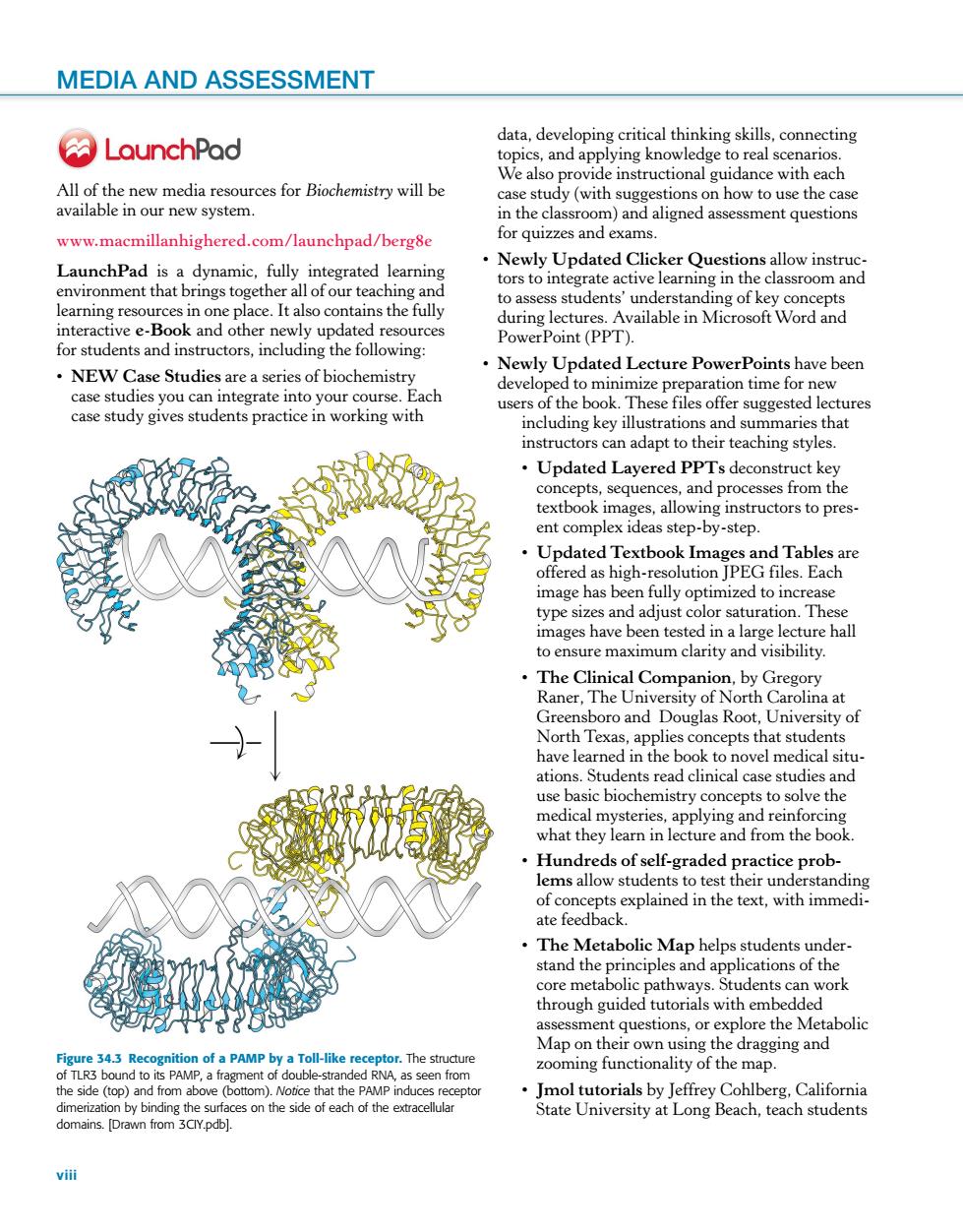正在加载图片...

MEDIA AND ASSESSMENT ∞LaunchPad ata.developin conecting dge to real scen ance w All of the new media resources for Biochemistry will be the available in our new system. in the classr oom)and aligned assessment questions www.macmillanhighered.com/launchpad/berg8e for auizzes and exams Newly Updated Clicke LaPad dynamic.fully integrated learnin rings together l of our teaching an students' ce.It ins the full sof Word and orenidentsandins PowerPoint (PPT) Newly Updated Lecture PowerPoints have been NEW Case Studies are a series of biochemistry case studies you can integrate into your course. ed e case study gives students practice in working with ncluding key illu that instructors can adapt to their teaching styles. Updated Layered PPTs dec all and ent comstep-bytp. Updated" xtbook Im es and Tables as high . T to ensure maximum clarity and visibility. The Clinical Co R The L Gregory 0 dent have learned in the book tonove medicalsitu ations.Students read clinical case studies and use basic biochemistry concepts to solve the Hundreds of self-graded practice prob- lems allow students to test their understanding of concepts explained in the text,with immedi ate feedback. The metabolic map helps students under. stand the principles and at oplications of the core metabolic pathways.Students can work through guided tutorials with embedded fAMbyTo-ikec The e side (top)a Jmol tutorials by Jeffrey Cohlberg,California by b es on the side of each of the extracellula State University at long beach.teach students viii All of the new media resources for Biochemistry will be available in our new system. www.macmillanhighered.com/launchpad/berg8e LaunchPad is a dynamic, fully integrated learning environment that brings together all of our teaching and learning resources in one place. It also contains the fully interactive e-Book and other newly updated resources for students and instructors, including the following: • NEW Case Studies are a series of biochemistry case studies you can integrate into your course. Each case study gives students practice in working with data, developing critical thinking skills, connecting topics, and applying knowledge to real scenarios. We also provide instructional guidance with each case study (with suggestions on how to use the case in the classroom) and aligned assessment questions for quizzes and exams. • Newly Updated Clicker Questions allow instructors to integrate active learning in the classroom and to assess students’ understanding of key concepts during lectures. Available in Microsoft Word and PowerPoint (PPT). • Newly Updated Lecture PowerPoints have been developed to minimize preparation time for new users of the book. These files offer suggested lectures including key illustrations and summaries that instructors can adapt to their teaching styles. • Updated Layered PPTs deconstruct key concepts, sequences, and processes from the textbook images, allowing instructors to present complex ideas step-by-step. • Updated Textbook Images and Tables are offered as high-resolution JPEG files. Each image has been fully optimized to increase type sizes and adjust color saturation. These images have been tested in a large lecture hall to ensure maximum clarity and visibility. • The Clinical Companion, by Gregory Raner, The University of North Carolina at Greensboro and Douglas Root, University of North Texas, applies concepts that students have learned in the book to novel medical situations. Students read clinical case studies and use basic biochemistry concepts to solve the medical mysteries, applying and reinforcing what they learn in lecture and from the book. • Hundreds of self-graded practice problems allow students to test their understanding of concepts explained in the text, with immediate feedback. • The Metabolic Map helps students understand the principles and applications of the core metabolic pathways. Students can work through guided tutorials with embedded assessment questions, or explore the Metabolic Map on their own using the dragging and zooming functionality of the map. • Jmol tutorials by Jeffrey Cohlberg, California State University at Long Beach, teach students MEDIA AND ASSESSMENT Figure 34.3 Recognition of a PAMP by a Toll-like receptor. The structure of TLR3 bound to its PAMP, a fragment of double-stranded RNA, as seen from the side (top) and from above (bottom). Notice that the PAMP induces receptor dimerization by binding the surfaces on the side of each of the extracellular domains. [Drawn from 3CIY.pdb]